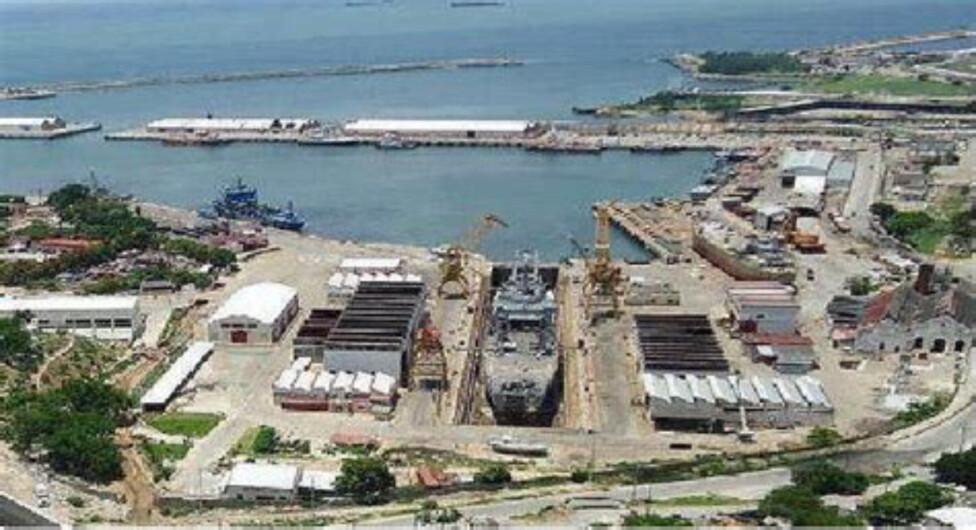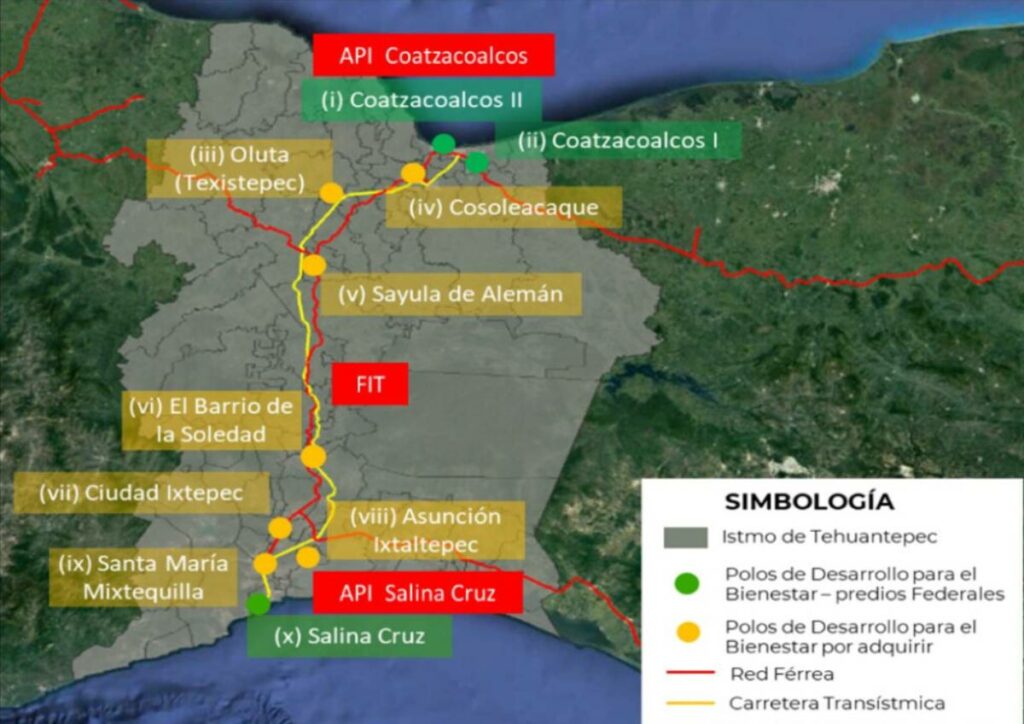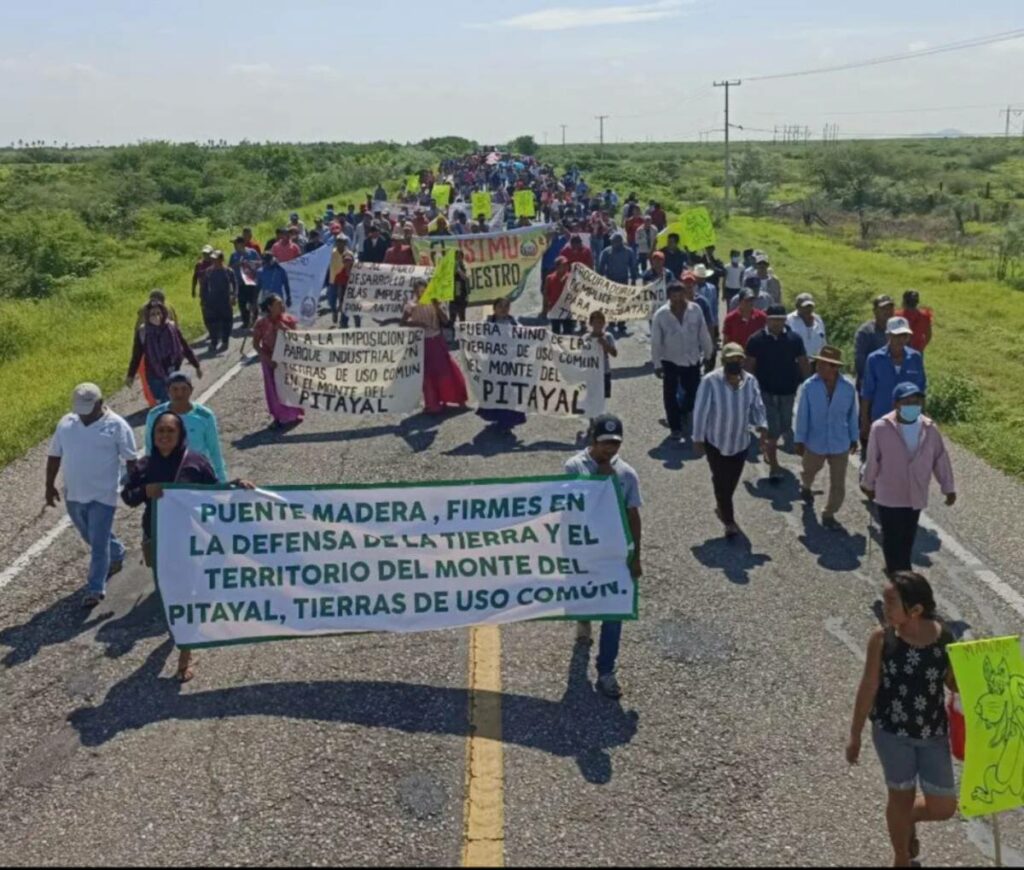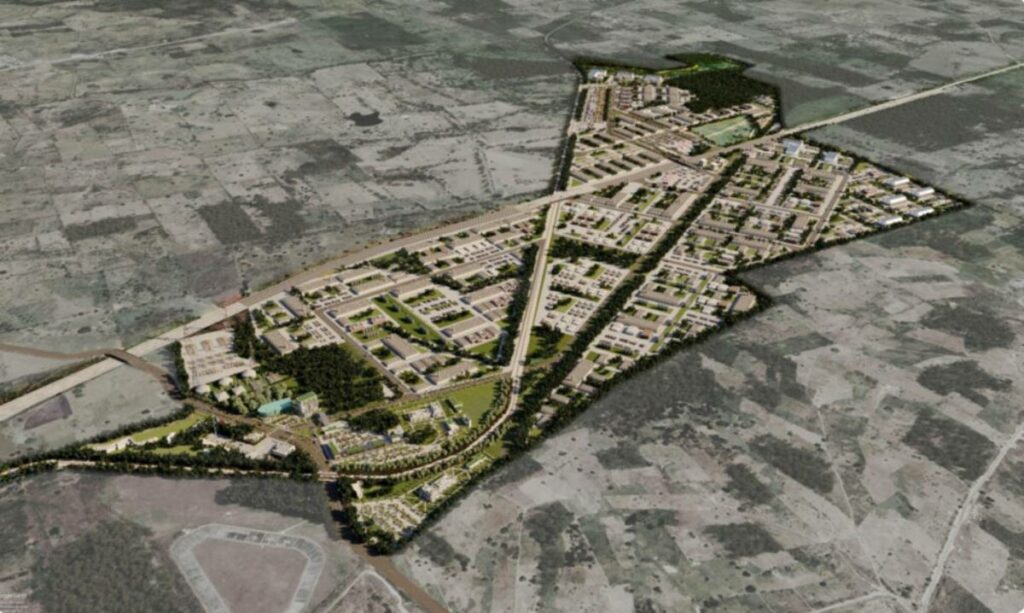
The megaproject puts greater pressure on water resources in a region where abundance and overexploitation of the resource coexist. For example, according to Conagua figures, of the 21 aquifers in Oaxaca, five show a deficit, and in Veracruz, of the 20 phreatic mantles (water tables), five suffer excessive extraction, such as the Papaloapan river basin. All these areas are on the route of the Interoceanic Corridor.
Text: Emilio Godoy / IPS
Photos: Government of Oaxaca, Government of Mexico y APIIDTT
Water does not come up to Elliot Escobar’s house in the municipality of Matías Romero, Oaxaca. His house is on the second floor, but there is not enough pressure for the water to reach it. In response to this, Elliot carries water with a hose from his sister’s house, located on the first floor of the house shared by the two families.
“I store it in thousand-liter tinacos (tanks), which last me about a month. We recycle the water to water plants, for example. In the municipality we don’t pay for the water because there is none, it arrives dirty. It is a worrisome situation,” said the 44-year-old lawyer.
Matías Romero, with a little more than 38 thousand inhabitants, is a geographical constituent of the Inter-Oceanic Corridor of the Isthmus of Tehuantepec (CIIT), under the responsibility of the Ministry of the Navy, and one of the three most important projects of the current government, together with the Mayan Train, and the Olmeca refinery system.
The water demand of the CIIT project is causing concern among the local population, already affected by the deficit of water resources, explained the lawyer, who shares the house above his sister’s with the other two members of his family.
“The project will require water and electricity, and we are unsure. Everything has to have a methodology, be systematized, the infrastructure must be consolidated. In Salina Cruz there have been complicated water problems in the colonias (neighborhoods), it is a problem that has been going on for years. There are few wells to supply the population,” Escobar pointed out.
The lawyer is a member of the organization Corriente del Pueblo Sol Rojo and spoke to IPS from his hometown in the state of Oaxaca.
“The project will require water and electricity, and we are in a state of uncertainty. Everything has to have a methodology, be systematized, the infrastructure must be consolidated.”
— Elliot Escobar
In the area, the population works, at least until now, in agriculture and cattle, pig and goat farming. In addition, the municipality is a transit point for thousands of undocumented migrants arriving by train or truck from the Guatemalan border en route to the United States.
Although water is a fundamental element of the megaproject, CIIT lacks a water plan, according to responses to requests for access to information submitted by IPS.
The set of projects is part of the Tehuantepec Isthmus Development Program that the Mexican government has been executing since 2019 with the aim of developing the south and southeast of this country of some 129 million inhabitants and the second largest economy in Latin America, behind only Brazil.

Map of the Interoceanic Corridor of the Isthmus of Tehuantepec, of some 300 kilometers, which seeks to connect Mexico’s Pacific and Atlantic coasts, by means of highways and a rehabilitated train, to promote industrial development in the south and southeast of the country and encourage exports. Image: Fonadin
An Inter-Oceanic Transformation
The plan for the isthmus, which extends some 300 kilometers from coast to coast, includes 10 industrial parks, the renovation of the ports of Salina Cruz, on the Pacific Ocean, and Coatzacoalcos, on the Atlantic, connected by the Isthmus of Tehuantepec Railroad, which is being reconstructed.
It also considers the modernization of the refineries of Salina Cruz, in the state of Oaxaca, and Minatitlán, in the state of Veracruz, the laying of a gas pipeline and the installation of a gas liquefaction plant off the coast of Salina Cruz.
The development program covers 46 municipalities in Oaxaca and 33 in Veracruz, over a distance of some 300 kilometers. The industrial sites, called “Poles of Development for Wellbeing”, require 380 hectares each of the 10.
Researcher Ursula Oswald, of the Regional Center for Multidisciplinary Research of the National Autonomous University of Mexico, told IPS that a comprehensive model is needed to analyze all aspects of the megaproject.
“The most urgent thing is to draw up a master plan, which should have a water plan before other processes. It is crucial, before putting in industries. And each one with a very strict order, to avoid contamination of water sources, and not to repeat a chaos like the one in the north,” she said from the city of Cuernavaca, Morelos.
For the researcher, it is necessary to answer questions such as “which basins, aquifers, how does surface water interact with subway water.”
The government of Andrés Manuel López Obrador is looking for companies to set up in the south and southeast of the country, in an attempt to attract investment and generate jobs in these areas, which are the most impoverished in the country.
But one obstacle to such development lies in the logistics of moving products to the U.S. market, the magnet for interested corporations, the lack of skilled workers and the environmental impact in a region characterized by its rich biodiversity.
Some recent cases show the difficulties of these processes. The U.S. electric car manufacturer Tesla chose in March the northern state of Nuevo León for the construction of its factory in Mexico, despite López Obrador’s interest in having it set up in the south.
Between 2020 and 2022, the CIIT’s budget was $162 million in the first year, $203 million in 2021 and almost doubled in 2022 to $529 million. But in 2023 it has dropped to $374 million.
Independent estimates put the total investment required for CIIT projects at US$1.4 billion, although there is no precise official figure.

A demonstration in Puente Madera, in the state of Oaxaca, against the advance of the Interoceanic Corridor of the Isthmus of Tehuantepec, between that southwestern state and Veracruz, in the southeast. The Mexican megaproject has generated rejection from some groups in the region, considering it an imposition that affects local communities. Image: APIIDTT
Water pressure
The megaproject puts further pressure on water resources in a region where abundance and overexploitation of the resource coexist.
Of the 21 aquifers in Oaxaca, five are in deficit, according to figures from the National Water Commission (Conagua). Among them, since the last decade, are those of Tehuantepec and Ostuta, which are on the corridor route.
In Veracruz, of the 20 water tables, five suffer from excessive extraction, such as the one in the Papaloapan River basin, also in the CIIT area.
One of the five objectives of the development program is to increase biodiversity and improve the quality of water, soil and air with a sustainable approach.
Meanwhile, CIIT’s regional program stipulates that the Ministry of Environment and Natural Resources must guarantee the resource for both the incoming companies and the localities of the intervened region.
However, the Supreme Auditor of the Federation did not find information on the increase of biodiversity or the improvement of water, soil, and air quality in 2021. In addition, it did not have sufficient data to assess compliance with the five CIIT objectives.
For the provision of the necessary water, the CIIT identified in its 2022 progress and results report the sale of water rights between users, the transfer from the Tehuantepec aquifer, despite its deficit, and deep wells; the use of dams, rivers or the construction of a desalination plant, in addition to the consumption of treated wastewater.

Model of the Texistepec industrial center in Veracruz. It is part of the Tehuantepec Isthmus Development Program, which includes the construction of five industrial parks in the southern state of Oaxaca and another five in the southeastern territory of Veracruz, five of which the Mexican government has already put out to tender. Image: CIIT
Indigenous peoples
A May 2021 document on indigenous consultation in the Oaxaca municipality of Ciudad Ixtepec, also on the Corridor’s fringe, consulted by IPS, suggests studies on the use of recycled and conditioned water for some industrial processes, the use of rainwater for green areas, and the introduction of programs to raise awareness and responsible use of the resource.
The area of influence of the megaproject is inhabited by some 900,000 indigenous people from 10 different native peoples, but the consultation process, free of interference, prior to the development of the works and with sufficient and timely information, only covered less than 1% of the native population.
The CIIT has already launched the international bidding process for the construction of three industrial parks in Veracruz and two in Oaxaca.
The right to a healthy environment is added to a context of human rights violations. At the end of July, the Civil Observation Mission, made up of representatives of non-governmental organizations, found violations of access to information, free participation and freedom of expression.
For this reason, the lawyer Escobar stressed the need for attention from the federal authorities.
“Water is not a commodity, it has to be guaranteed to the population. We have to make a strong investment in water and develop awareness about it. We do not understand their concept of modernity, they think it is only about building megaprojects. There is going to be an environmental problem in the medium term,” he warned.
For her part, the academic Oswald suggested going beyond the traditional focus on attracting investment. “No company is going to invest if it does not have guaranteed supply, land, the exit of its merchandise on both sides of the oceans and labor. It is necessary to link water, cost, the social issue, which indigenous groups are in the region. What other mechanisms do I have to provide water? Who has control in the region? That is basic to understand the conflicts. It is a crucial socio-cultural issue,” she said.
This article was originally published in IPS. You can consult the original version here.
This article and photos were published in Pie de Página on August 14th, 2023. https://piedepagina.mx/al-corredor-interoceanico-le-falta-agua/
English translation Schools for Chiapas.
